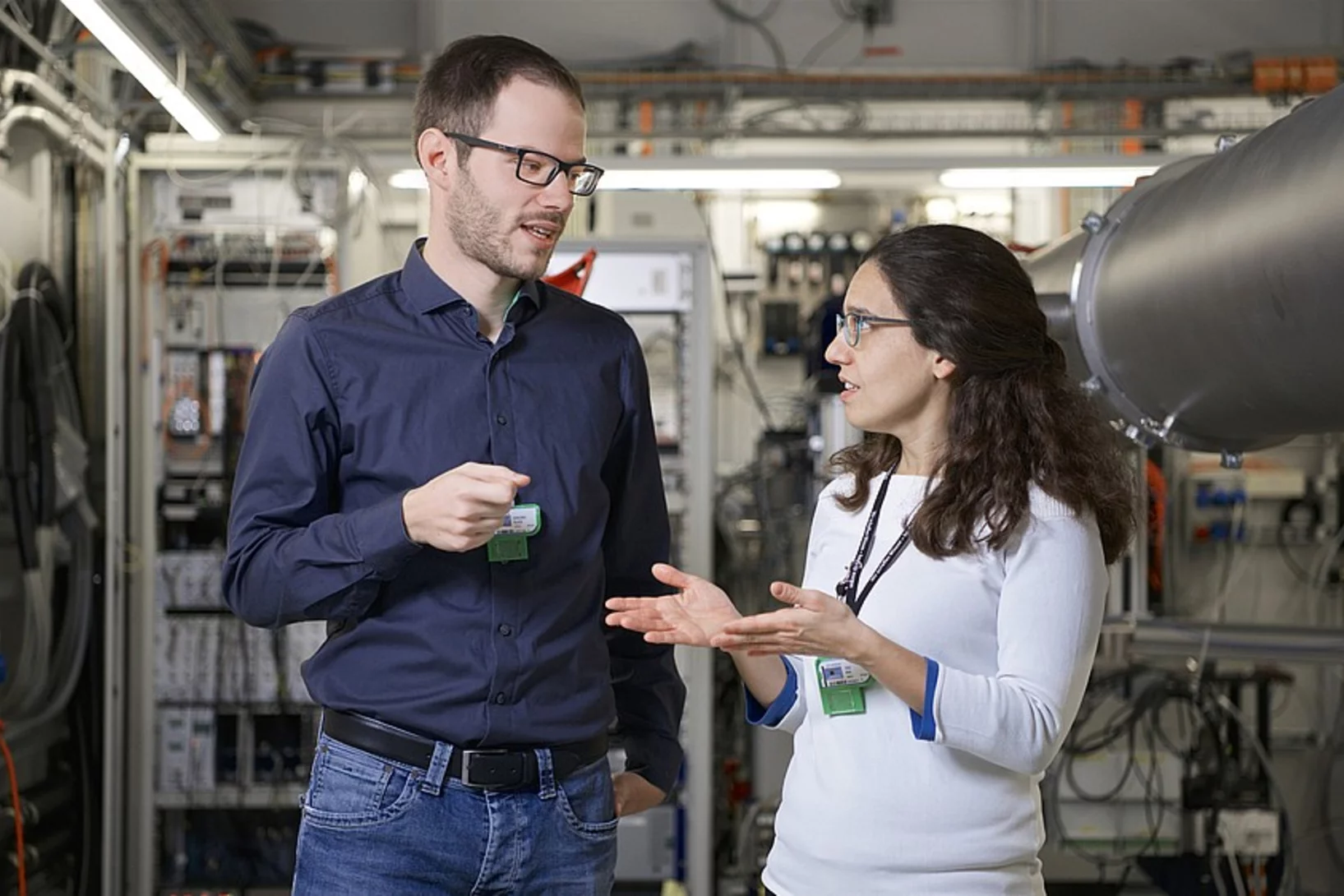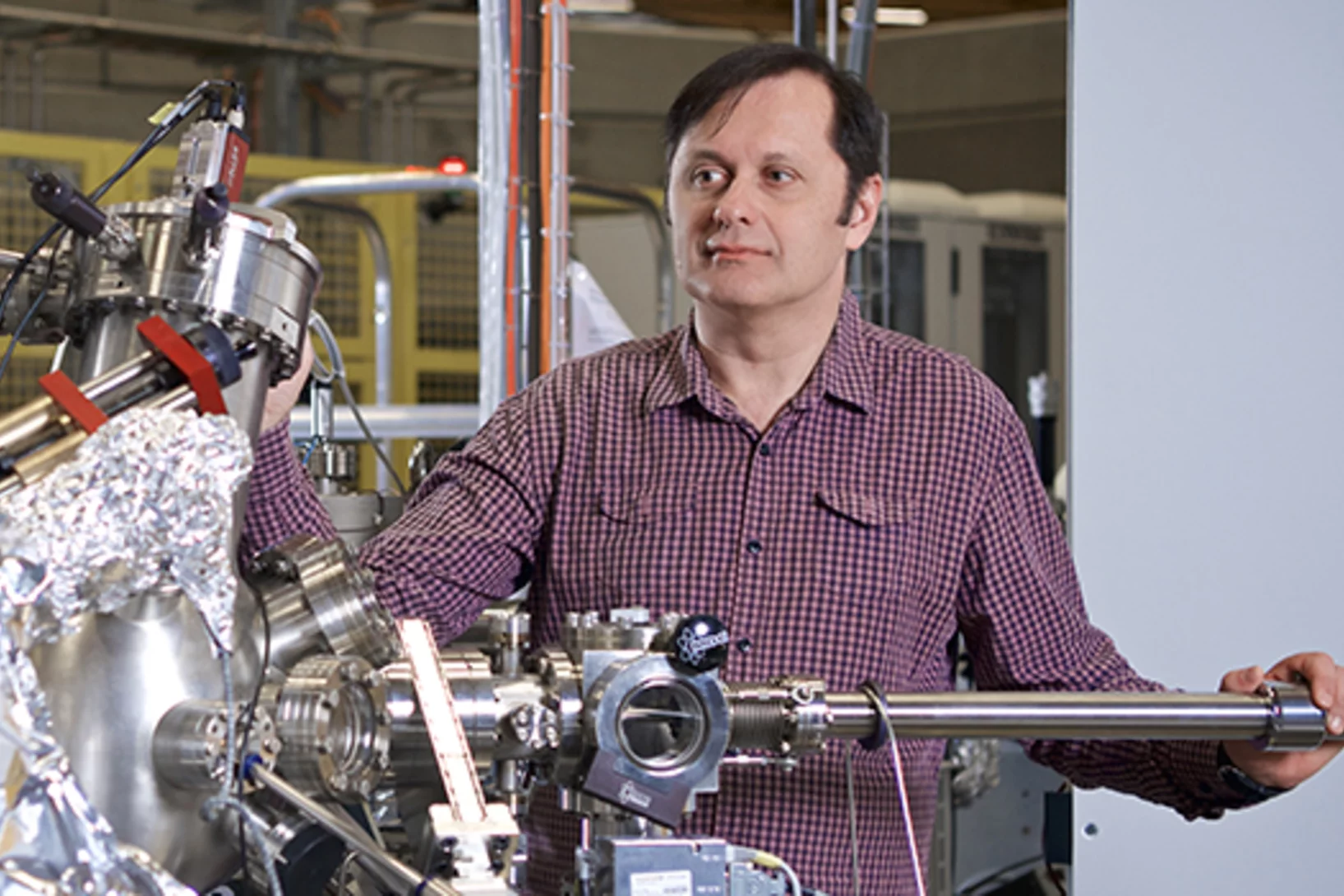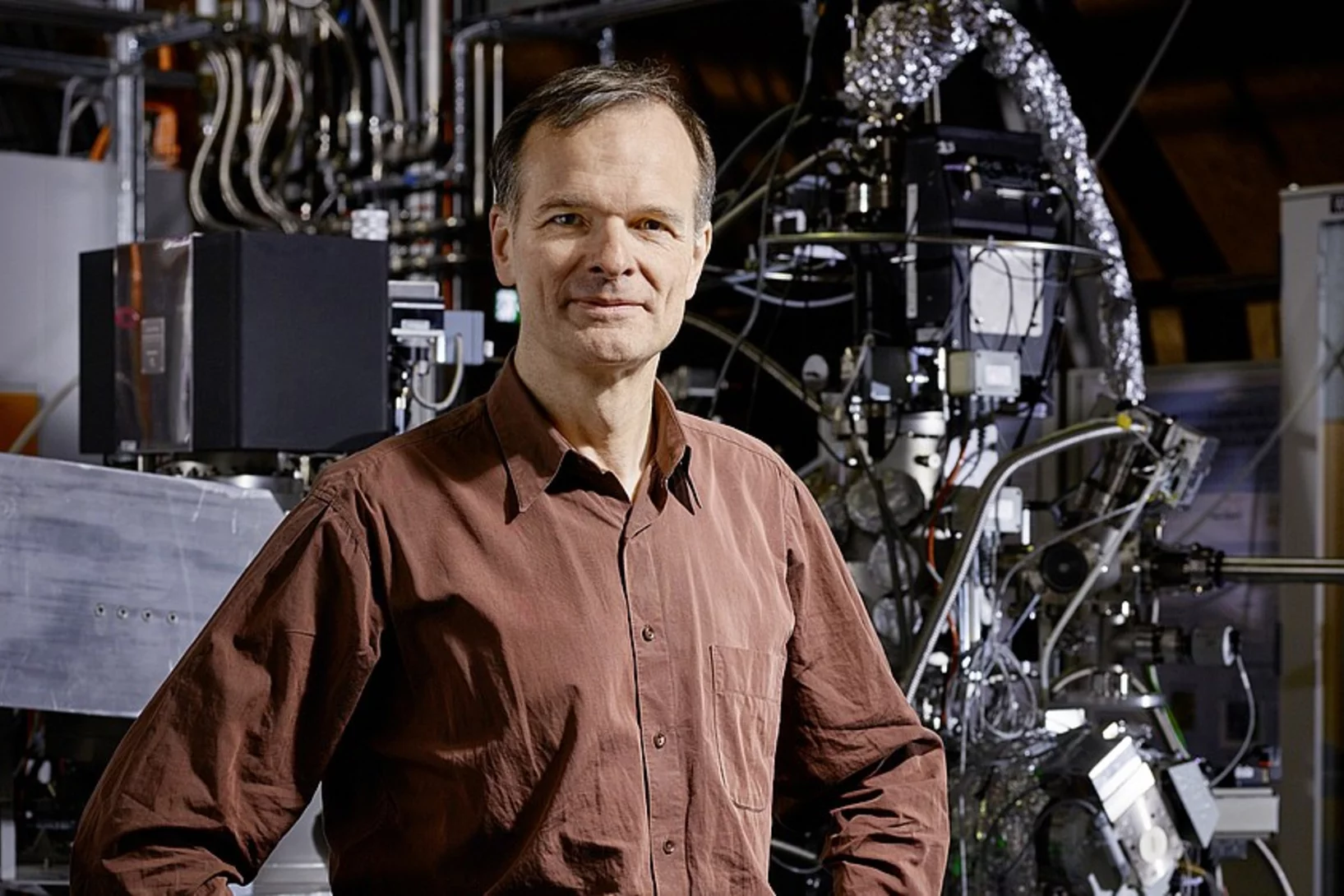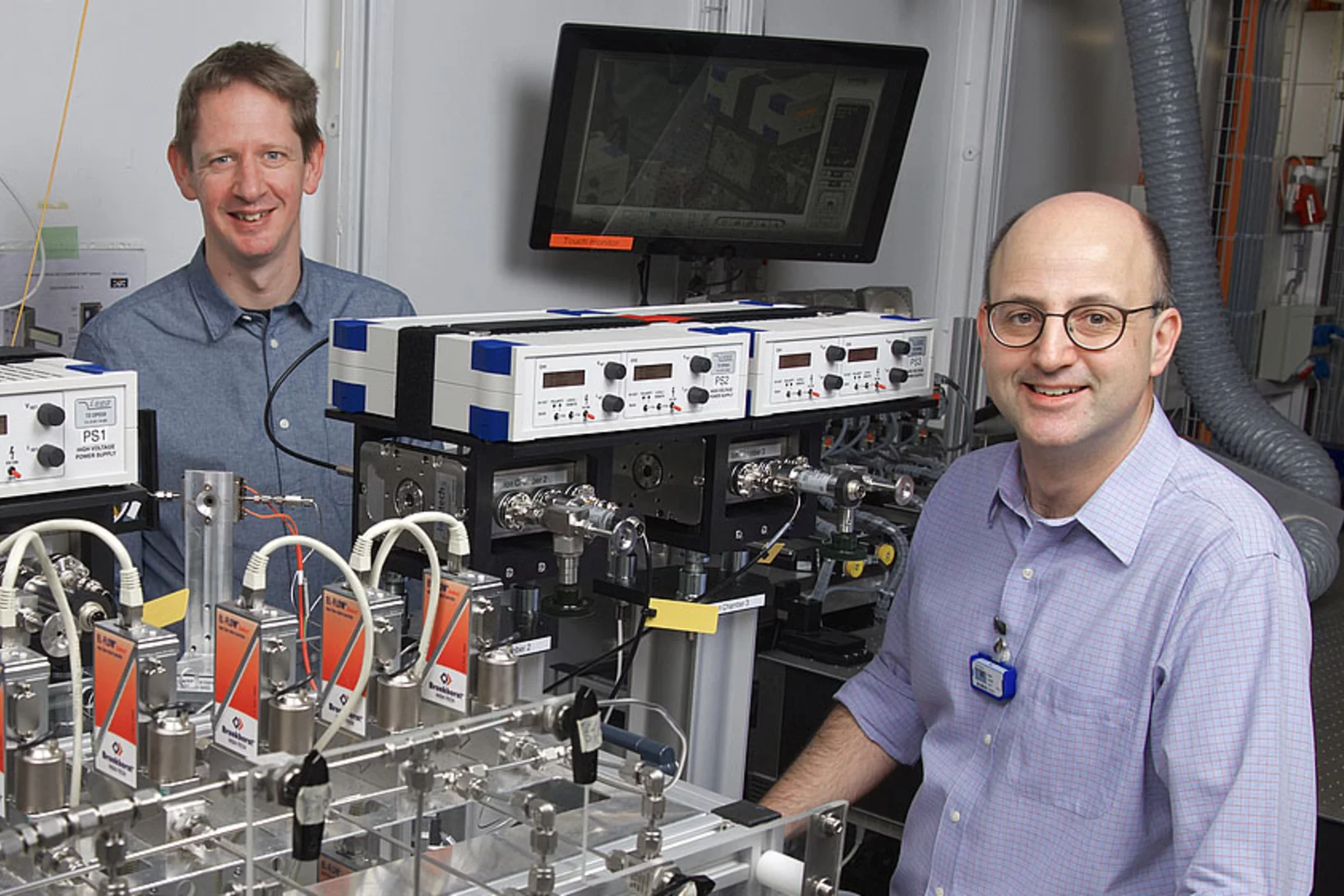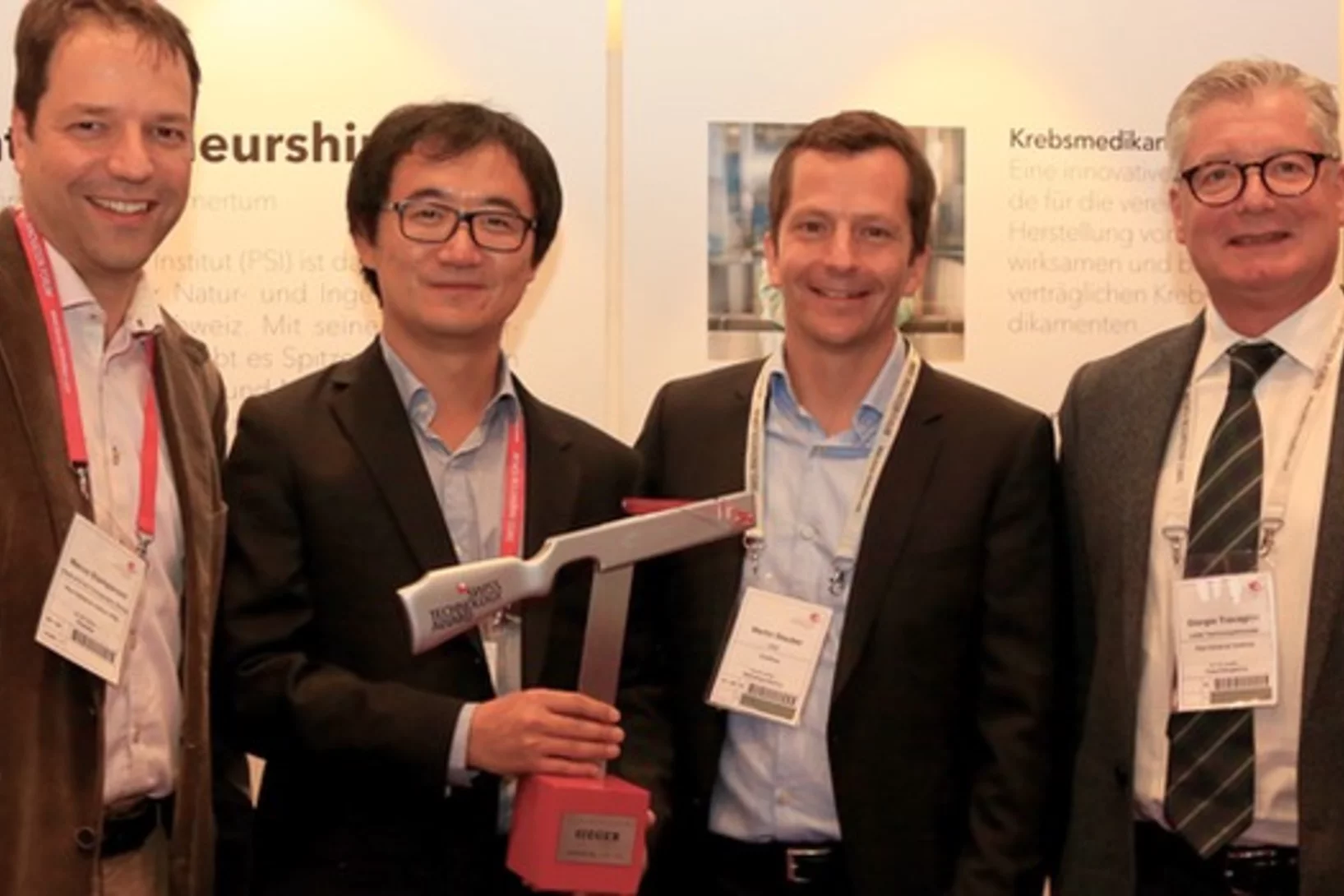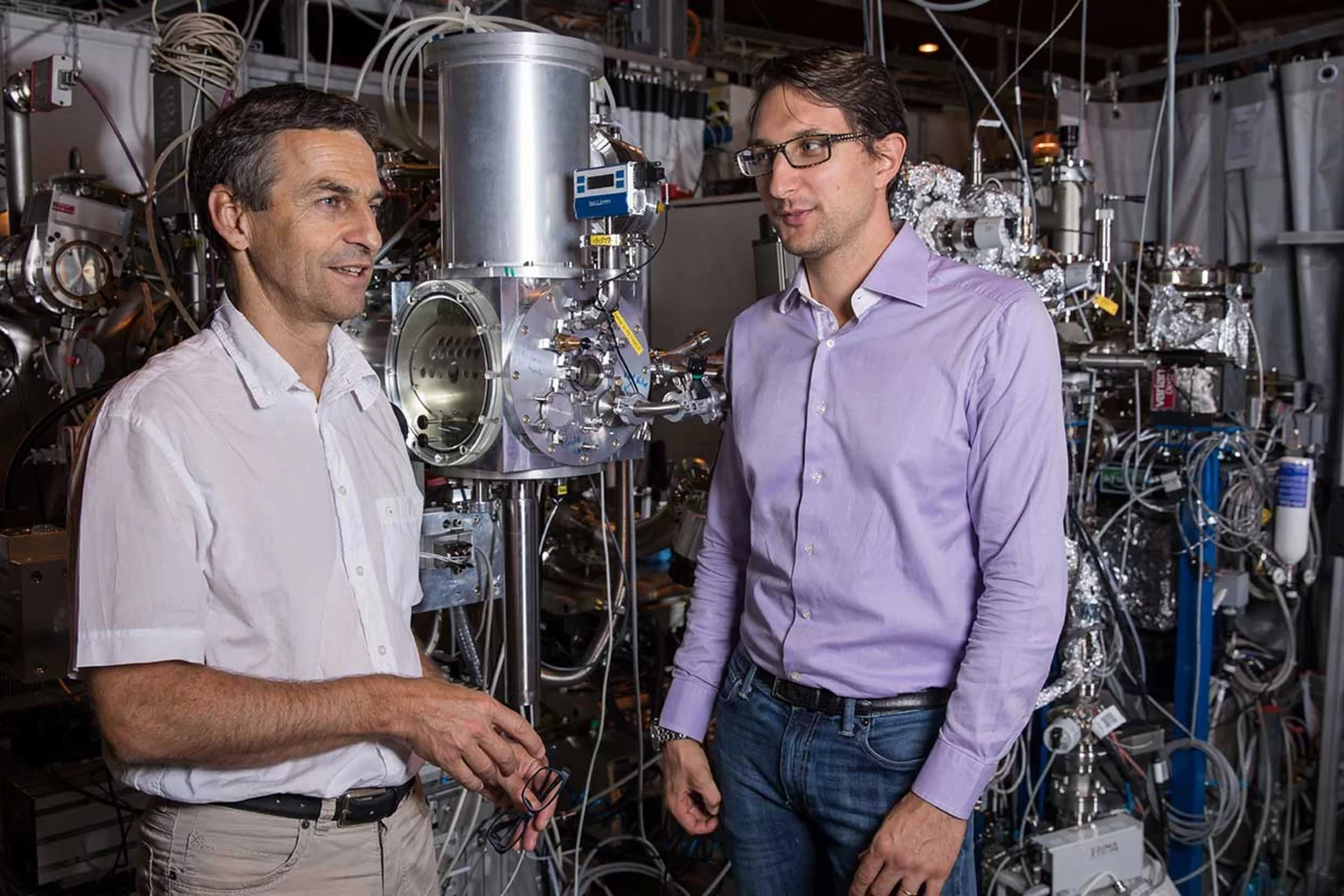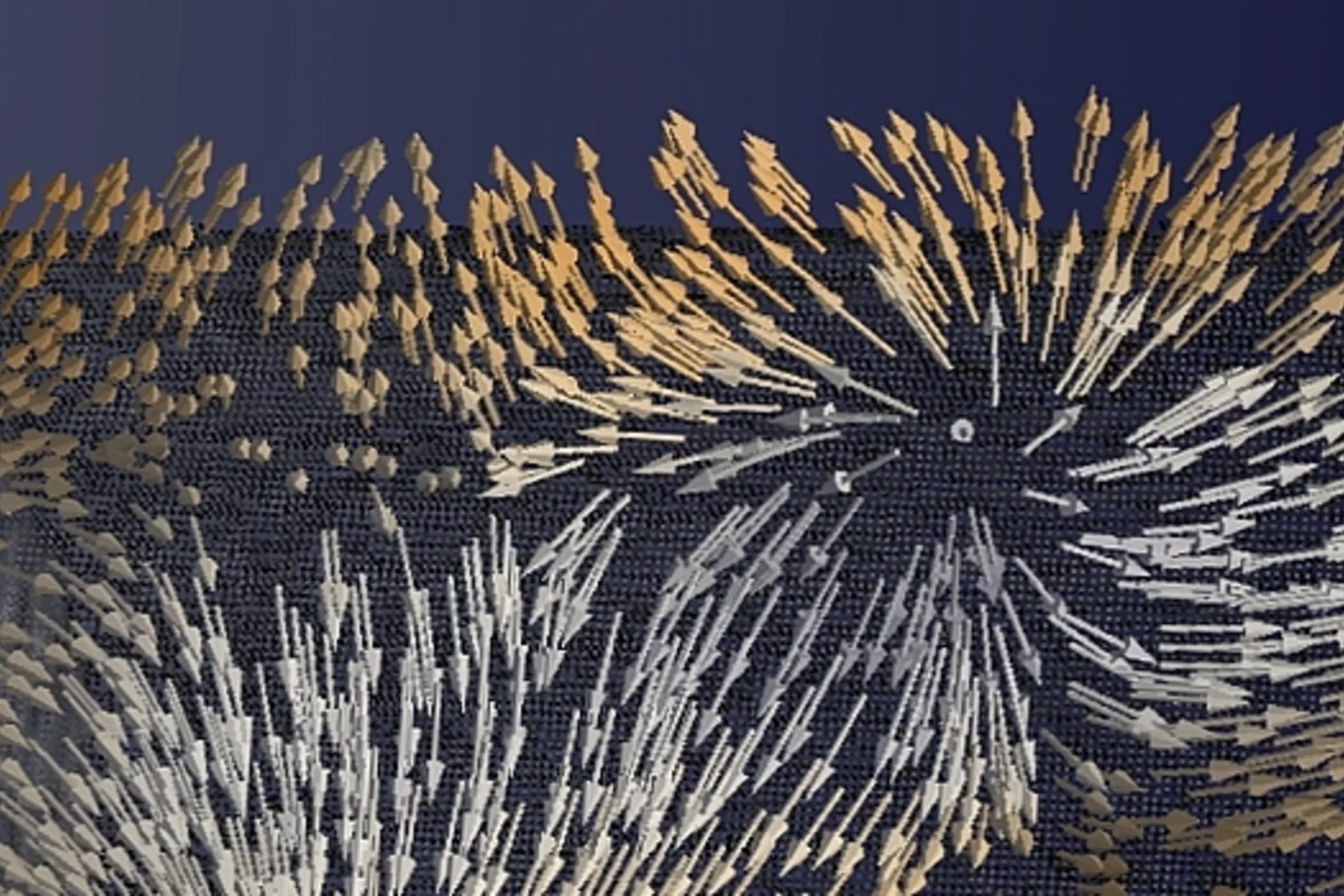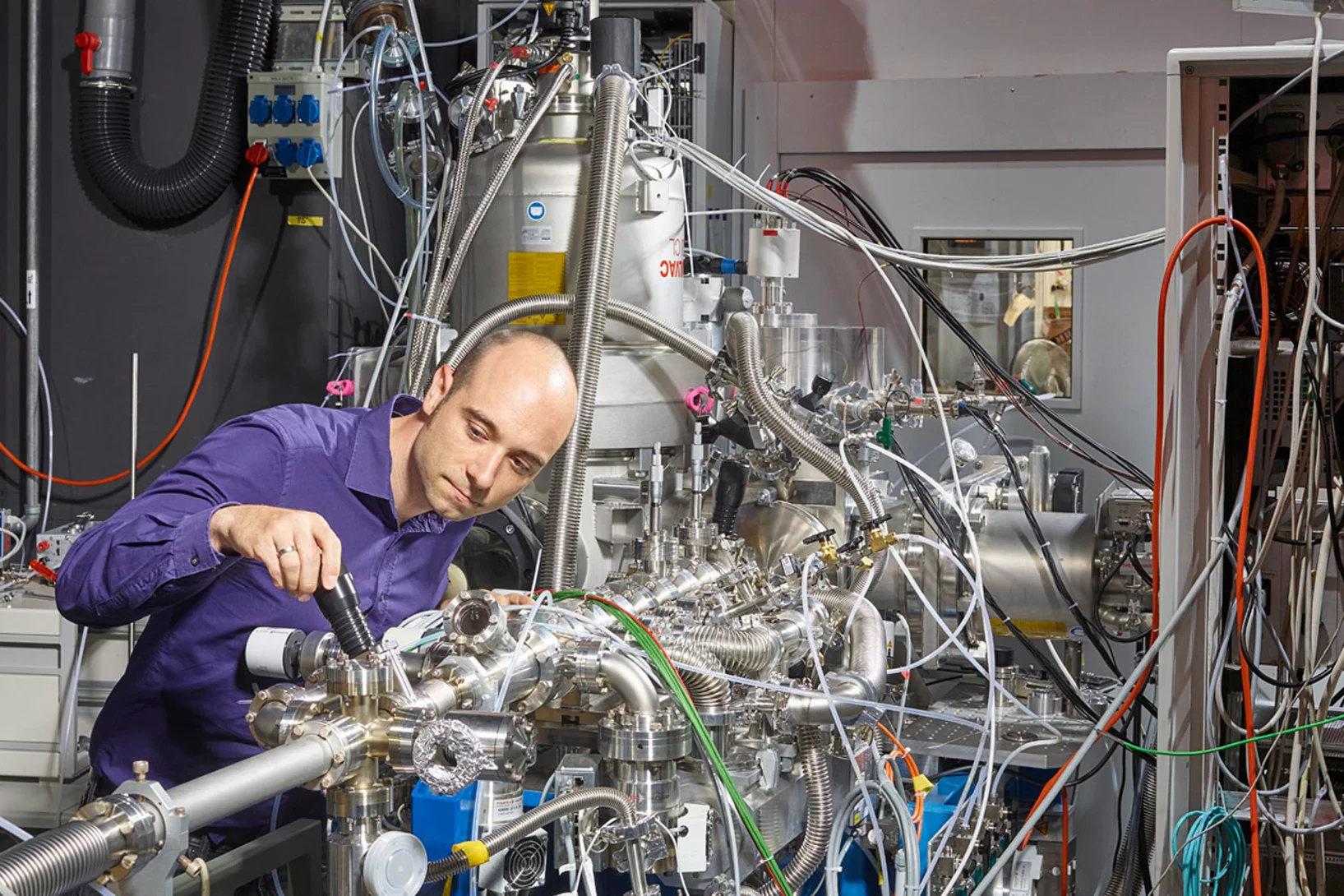SLS
Virtual lens improves X-ray microscopy
A method developed by PSI researchers makes X-ray images of materials even better. The researchers took a number of individual images while moving an optical lens. From these, with the help of computer algorithms, they generated one overall image.
On the go at 200 kilometres per hour
Fabia Gozzo is no woman for the comfort zone. First she made a beamline at the Swiss Light Source SLS of the Paul Scherrer Institute PSI into one of the world's leading facilities. Today she is making her knowledge available to industry with her spin-off.
On the path to new high-performance transistors
The electronics industry expects a novel high-performance transistor made of gallium nitride to offer considerable advantages over present-day high-frequency transistors. Yet many fundamental properties of the material remain unknown. Now, for the first time, researchers at the Paul Scherrer Institute PSI have observed electrons while they were flowing in this promising transistor. For that they used one of the world's best sources of soft X-rays at PSI's Swiss Light Source SLS.
Light for biomolecules and super-fast processes
The 16th of May is the International Day of Light. The research carried out with light at PSI enables advances in biology and pharmacology and also promotes the development of new materials for data storage and new technologies for personalised medicine.
Cleaner diesel emissions
PSI researchers have found out why it is harder to control the noxious nitrogen oxides in diesel exhaust at low temperatures – and how, in the future, emissions can be cleaned more efficiently depending on the temperature.
PSI spin-off GratXray wins Swiss Technology Award 2017
A spin-off from PSI has received this year's Swiss Technology Award: The young company GratXray is developing a new method for early diagnosis of breast cancer.
Atmosphere in X-ray light
PSI researchers have developed an experimental chamber in which they can recreate atmospheric processes and probe them with unprecedented precision, using X-ray light from the Swiss Light Source SLS. In the initial experiments, they have studied the production of bromine, which plays an essential role in the decomposition of ozone in the lower layers of the atmosphere. In the future, the new experiment chamber will also be available for use by researchers from other scientific fields.
X-ray and neutron imaging for palaeontologists and archaeologists
Federica Marone illuminates objects with high-intensity X-ray beams, Eberhard Lehmann with neutrons. Both have used their methods to give palaeontologists and archaeologists a new view into the past.
Diving into magnets
For the first time, scientists have made visible the directions of the magnetisation inside a 3D magnetic object. The smallest details in their visualisation were ten thousand times smaller than a millimetre. Among others, the magnetic structure contained one outstanding kind of pattern: magnetic singularities called Bloch points, which up to now were only known in theory.
Fuel and chemicals from plant waste
Lignin, as a constituent of many plants, accumulates in large quantities and could theoretically be used as a precursor material for production of fuels and chemicals. Researchers at the Paul Scherrer Institute PSI and ETH Zurich have developed a method with which the processes that take place in the catalytic breakdown of lignin can be observed in detail. The knowledge thus gained could enable targeted improvement of production methods in the future.

